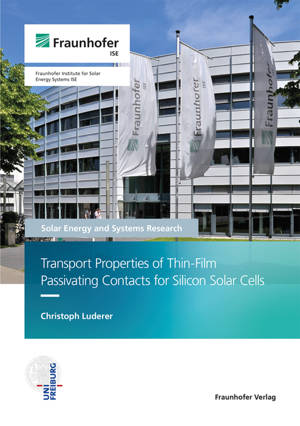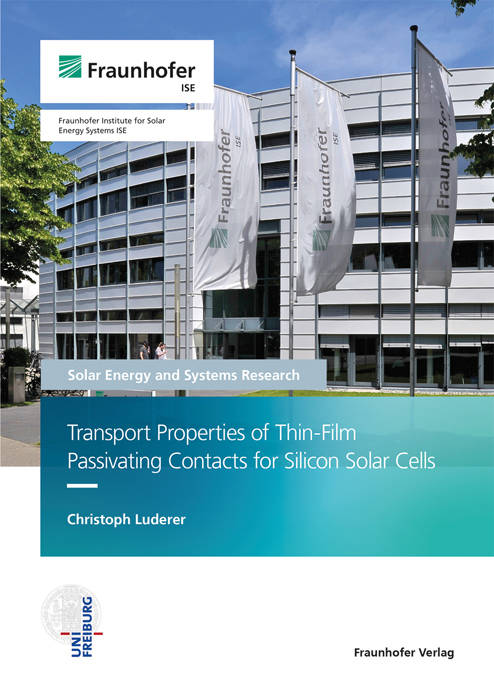
- Afhalen na 1 uur in een winkel met voorraad
- Gratis thuislevering in België vanaf € 30
- Ruim aanbod met 7 miljoen producten
- Afhalen na 1 uur in een winkel met voorraad
- Gratis thuislevering in België vanaf € 30
- Ruim aanbod met 7 miljoen producten
Transport Properties of Thin-Film Passivating Contacts for Silicon Solar Cells.
Dissertationsschrift
Christoph Luderer
€ 98,95
+ 197 punten
Omschrijving
Increasing the power conversion efficiency of solar cells is not only attractive in terms of effective land use, but also a strong lever for lower levelized costs of electricity. State-of-the-art passivating and carrier-selective contacts enable the most efficient silicon solar cells. They can also be integrated in tandem solar cells, the logical successors of Si single-junction solar cells, to achieve even better power conversion.
This work investigates the transport properties of silicon-based heterostructures using dedicated test structures. The transport losses of corresponding solar cells cells are significantly reduced by tailoring the interfaces in the contact stack, taking into account the trade-off between transport and passivation, leading to increased power conversion efficiency. With respect to tandem solar cells, a tunneling recombination junction is developed as sub-cell interconnection, focusing on industrial feasibility with the use of a lean process sequence and exploiting synergy effects with mainstream technology.
This work investigates the transport properties of silicon-based heterostructures using dedicated test structures. The transport losses of corresponding solar cells cells are significantly reduced by tailoring the interfaces in the contact stack, taking into account the trade-off between transport and passivation, leading to increased power conversion efficiency. With respect to tandem solar cells, a tunneling recombination junction is developed as sub-cell interconnection, focusing on industrial feasibility with the use of a lean process sequence and exploiting synergy effects with mainstream technology.
Specificaties
Betrokkenen
- Auteur(s):
- Uitgeverij:
Inhoud
- Aantal bladzijden:
- 238
- Taal:
- Engels
- Reeks:
Eigenschappen
- Productcode (EAN):
- 9783839617816
- Uitvoering:
- Paperback
- Afmetingen:
- 155 mm x 14 mm
- Gewicht:
- 346 g

Alleen bij Standaard Boekhandel
+ 197 punten op je klantenkaart van Standaard Boekhandel
Beoordelingen
We publiceren alleen reviews die voldoen aan de voorwaarden voor reviews. Bekijk onze voorwaarden voor reviews.









